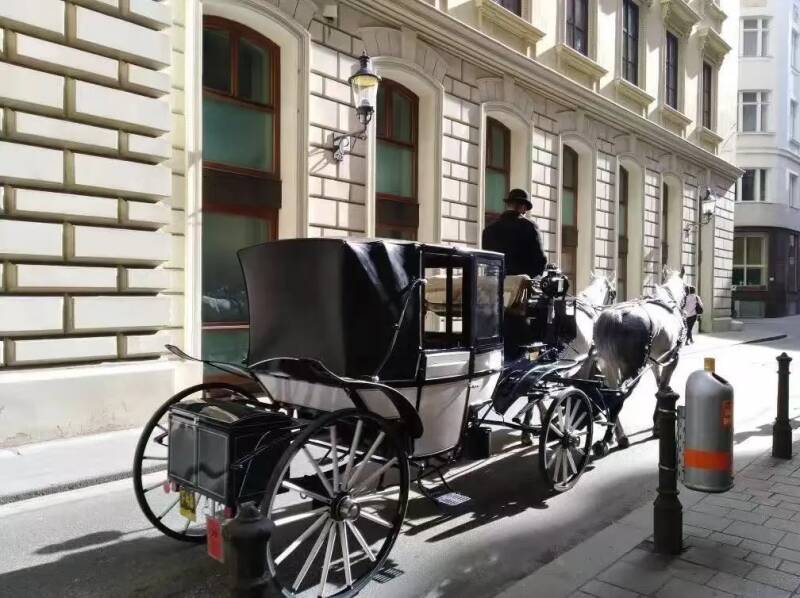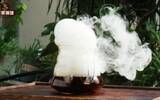How to make Vienna coffee? Who invented latte coffee? Who is the founder of Blue Bottle House?
In the world of coffee, the dairy product "cream" can be said to be quite common. Because the taste of cream is very rich, it not only has a silky and thick taste, but also has a rich and soft sweet aroma. Therefore, it is often added to various freshly made coffee drinks, taking on the icing on the cake such as reconciling bitterness, embellishing products, and increasing the taste level. Because of this, we can often see it on various coffee drinks! The Viennese coffee that Qianjie wants to share today is the first pioneer to add cream to coffee.

Although Viennese coffee has Vienna in its name, like most coffee products, the name does not appear on the menu of local cafes. This does not mean that there is no Viennese coffee in the local area, but local people are more accustomed to calling it "Einsänner"(carriage/coachman coffee). Einsänner means "single carriage" in German, and as the name suggests, it means using a light carriage that can only be driven by a single person. In the 19th and early 20th centuries, horse-drawn carriages were a very common means of transportation in European cities (now a local cultural symbol in Austria). Since the carriage of a single carriage can only accommodate one coachman (the person driving the carriage), the word Einsänner also means a coachman (single person).

Judging from the name, it is not difficult to find that this coffee has something to do with the coachman. This is indeed the case. As long as we search for Viennese coffee on the Internet, we can see the origin of many related stories. Although there are many versions and different reasons, the story always revolves around the protagonist of the coachman. For example, the coachman added cream to the coffee to make Viennese coffee in order to be refreshed and full on winter nights; or to prevent the coffee from being bumped out during the carriage journey, he chose to add cream to reduce the mobility of coffee...
(Picture comes from the Internet) Simply put, this cup of coffee with cream is the crystallization of the wisdom of the coachman, so it is named the coachman coffee. But in fact, according to information reviewed by Front Street, as early as 200 years before the coachman invented this cup of coffee, someone had already done the practice of adding cream to coffee. This person is probably familiar to everyone on Front Street. He is the founder of the House of Blue Bottle, Jerzy Franciszek Kulczycki. In 1684, Kochisgen received a generous reward for rescuing the siege of Vienna during the war, as well as coffee beans dropped by the Turks after the defeat. Then with the reward and coffee beans, Koczski opened his second coffee shop in Vienna, the Blue Bottle House.
The coffee that Koczky initially served in the store was made in the same way as Turkish coffee. As Qian Street often shares, he threw water and coffee powder into a pot to boil, and then poured them into a cup to drink. But because Austrians really could not accept this bitter and dregs black drink, Kochski later "localized" the coffee in order to cater to the tastes of local residents.
The coffee grounds are filtered in cloth bags, and then honey, milk, cream, spices and other spices are added to balance the bitterness of the coffee. Thus, the original version of "latte coffee" and "cream coffee" was born. Coffee also entered Austrian life. Although the Blue Bottle House closed with Kochski's death, the practice of adding various "condiments" to coffee has long been spread locally in Austria. For example, the Café Tomaselli, which opened in Salzburg in 1703, attracted the music prodigy Mozart to stop with its cream coffee (he went to the cafe to taste cream coffee almost every day), so that even after more than 300 years, it still stands firm and becomes the second oldest coffee shop in the world. As a result, cream coffee has become a must-order signature product for tourists visiting the store.
(Picture comes from the Internet) To sum up, we can know that Viennese coffee has a long history. Okay, without saying much, let's share with Qianjie how to make the traditional and modern versions of cream coffee!
Traditional Viennese coffee Traditional Viennese coffee is very simple to make! According to the information found on Qianjie, we only need to spread the whipped cream on the surface of the black coffee, but if we want to be more careful, we can use a high-legged glass to serve it; friends who don't like bitterness can add sugar, sweet wine and other ingredients to the coffee to reconcile the bitterness.
Since there are no restrictions on black coffee, it can be made by hand, or concentrated and diluted with water, American or Long black. If you want to restore the classics to the greatest extent, Qianjie's suggestion is to use some coffee beans that are roasted deeply and have a strong burnt aroma. For example, Qianjie Golden Mantelin Qianjie bean list is a very good choice.
The order of making traditional Viennese coffee is: first whisk a portion of cream, then make a cup of hand-brewed coffee/American coffee, and finally spread the beaten cream on the coffee to finish the production. The coffee extraction parameters of Qianjie are as follows (Qianjie Golden Mantelin brewing parameters): powder amount 15g, powder and water ratio 1:15, water temperature 88°C, grinding degree Ek43 11 scale, 75% sieving rate on No. 20 screen, grinding with fine sugar, filter cup kono, and brewing method in three-stage.
Because there is always a sharing on the street before the brewing process, I will just skip it here. After we rinse the coffee out, we can add the right amount of sugar to reduce the bitterness of the coffee, so that when we drink cream and coffee at the same time, the bitterness will not be amplified by the excessive contrast. Finally, spread the whipped cream and a cup of traditional Viennese coffee is made ~
When drinking, we can use a spoon or straw to stir it slightly, so that part of the cream can blend with the coffee, making it more comfortable to drink ~
Today's Viennese coffee is no longer short of supplies, so there are many more tricks in making coffee. For example, the base of Viennese coffee can no longer be simple black coffee. It can be milk coffee, mocha coffee, or flavored milk coffee with various flavor attributes added; the cream top also has more varieties, and you can add chocolate, crushed nuts and other materials to embellish, or create various shapes by outlining and sculpting... All in all, we can play "very flowery".
It is also very simple to make, we only need to add cream to any iced coffee. For example, if we are making a cup of taffee-flavored Viennese coffee, then we can use the original recipe to make a taffee latte, and then spread the beaten cream on the surface to decorate and shape, and finally sprinkle with some cocoa and crushed nuts to add layers ~ very simple. It is worth mentioning that since regular cream only has a milky flavor and may taste a little monotonous, we can also add some flavored syrup during the beating process to give the cream flavor properties. For example, if you want the cream to have a vanilla flavor, add vanilla syrup, and if you want it to have a caramel flavor, add caramel syrup... And so on! In short, it's still the same sentence, we can use our imagination and play "very flowery"~
- END -
Important Notice :
前街咖啡 FrontStreet Coffee has moved to new addredd:
FrontStreet Coffee Address: 315,Donghua East Road,GuangZhou
Tel:020 38364473
- Prev

How long the coffee steams! Why does it take 30 seconds to steam hand-brewed coffee?
"What is the difference between a coffee steamed for 30 seconds and a coffee steamed for 60 seconds? "This was a question raised by a friend on Qian Street yesterday. Not to mention, this question is indeed interesting! As we all know, steaming is a regular part of hand-brewed coffee. The specific operation is that before the official water injection, we will inject it in advance
- Next

Can dry ice be used to make hand-brewed coffee? Can ice cubes used for making coffee be replaced with dry ice?
In the tweet comment area (portal) shared two months ago on Qianjie, many friends left messages proposing to use dry ice instead of ice cubes to make ice hand-made ice. The reason for this is to experience the complete flavor of coffee in the ice hockey. "If you want to taste the most complete coffee flavor in your hand-brewed coffee,
Related
- What is the standard process for the purpose of coffee cup testing? What is the difference between hand-brewed coffee and cup testing?
- How to use hand-brewed coffee paragon small golden balls? How does cold coffee lock in the aroma of coffee?
- Is American coffee black? What is the difference between American coffee and drip coffee?
- Unexpected! Well-known tea beverage brand Lele Tea will withdraw from the Zhengzhou market!
- Starbucks enters the fashion and beauty industry?! Netizen: Give me an ice American eye cream
- Why can American refills for free? The difference between Americano and American drip pot coffee
- Being chased out of the rain in front of Starbucks?! Store: Sheltering from rain under umbrellas poses a safety hazard
- The white moonlight has changed?! Lucky launches "Big Winter Pear American"
- Hand-brewed coffee three-stage method, high-sweet and universal brewing method to share! What does the high sweet water level of hand-brewed coffee mean?
- What is the difference between raw, refined and full espresso coffee? How to extract espresso and taste good?

